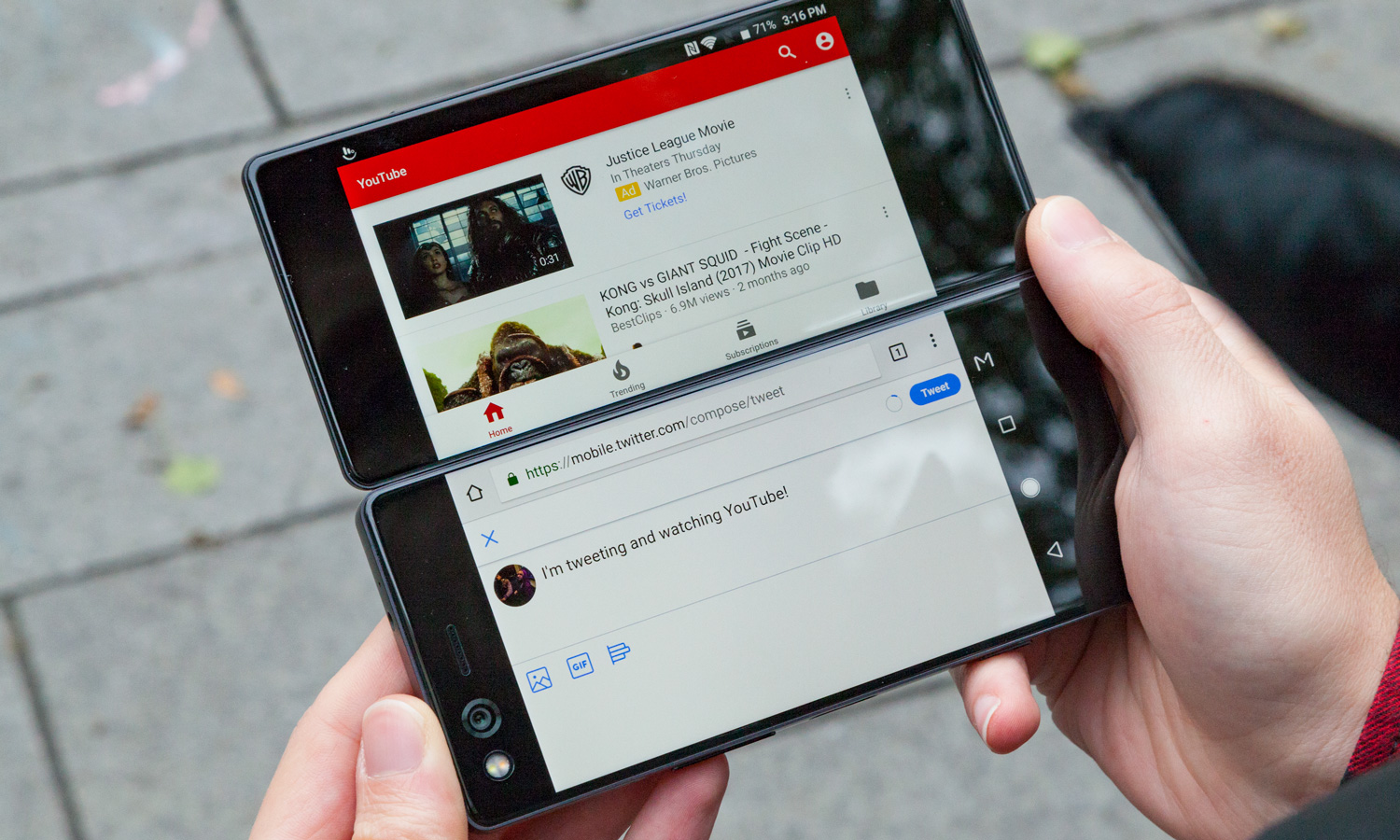Tom's Guide Verdict
ZTE's dual-screen folding smartphone looks, runs and feels like nothing else on the market. But when it comes to smartphones, more isn't always better.
Pros
- +
Durable aluminum hinge
- +
Headphone jack
- +
Ability to run two apps at once
Cons
- -
Disappointing camera
- -
Subpar battery life
- -
Second screen can cause performance issues
- -
Hinge ruins your ability to use both displays for one app
Why you can trust Tom's Guide
The dream of dual-screen phones refuses to die. Every now and then, an enterprising phone maker rolls out a wild new contraption — sometimes with a plethora of hinges, other times with a second display on the back purely for notifications and other glanceable bits of information. There's no blueprint for how these devices should work, so the execution often varies dramatically.
Enter the ZTE Axon M, the latest attempt by a major global player in the industry to capitalize on that never-ending desire to do more. In one sense, the Axon M achieves that ideal, allowing users to run a pair of apps side by side — and in perfect harmony much of the time. But it's the basics where this hulking beast of a handset falters, with a subpar camera and battery, and a flawed combination of software and hardware, which leads to a sea of headaches.
Price and Availability
The ZTE Axon M costs $725 and is available exclusively from AT&T. There is only one configuration, with 64GB of storage, though the phone does accept microSD cards, so you can add up to 256GB of extra capacity.
ZTE Axon M Specs
| Price | $725 |
| OS | Android 7.1.2 Nougat |
| Screen Size (Resolution) | Dual 5.2 inch (1920 x 1080) |
| CPU | Qualcomm Snapdragon 821 |
| RAM | 4GB |
| Storage | 64GB |
| microSD Slot? | Yes, expandable up to 256GB |
| Front/Rear Camera | 20-MP, f/1.8 |
| Battery Life (Hrs:Mins) | 8:58 |
| Water Resistance | No |
| Size | 5.94 x 2.82 x 0.48 inches |
| Weight | 8.1 ounces |
Design: Heavy metal
There's no avoiding it: The Axon M is a brick of a phone. This handset is about half an inch thick, so you could stack two Moto Z2 Forces next to it, and they'd be about even with ZTE's behemoth. Tipping the scale at half a pound, the Axon M's got a noticeable heft, too. But folded up, it's not quite as unwieldy to navigate with one hand as I was expecting.
Eventually, we'll see truly foldable smartphones touting flexible displays that can bend and twist without the need for a physical hinge, as Samsung's long-rumored Galaxy X might do. But until then, we have the Axon M, a traditional, clamshell-style handset, only with its screens on the outside.

This means the two sides of the phone look virtually the same, the only difference being the device's lone 20-megapixel camera and earpiece, situated in the top bezel above the main display. The front and back of the phone are both coated in Gorilla Glass 5 and are bonded to a robust, rectangular aluminum frame. The hinge bulges out slightly along the right edge when you hold the phone folded in, though that actually makes the handset easier to grip for those of us who are right-handed.

The hinge itself feels very sturdy and reveals the second screen with a satisfying click. While I'm not entirely convinced that the Axon M makes a great argument for dual-screen phones, the companies that follow in ZTE's footsteps should take note of the attention to build-quality here. This phone feels premium and properly engineered — a Kyocera Echo this is not.
Get instant access to breaking news, the hottest reviews, great deals and helpful tips.
Folded out, the Axon M's two panels combine into a 6.5-inch display. It's nearly a perfect square, with a resolution of 2160 x 1920, though that's broken up by the hinge down the center. The divide isn't especially important unless you're using the phone in Extended mode, in which one app spreads across both screens.
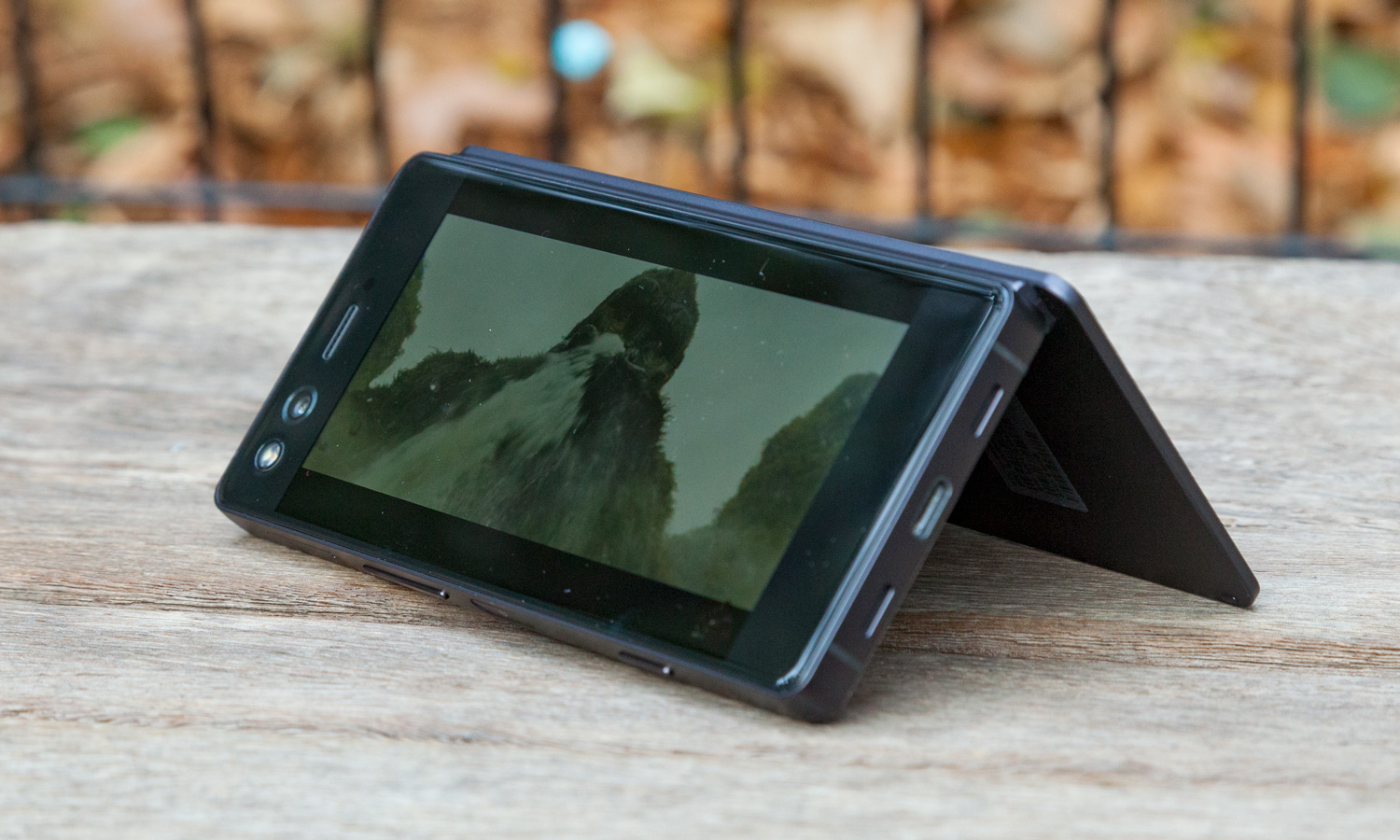
The bezels to the left and right are almost nonexistent, but the forehead and chin are exceptionally large. This is likely because ZTE had to stuff a full-scale camera and flash where a front-facing shooter would typically go.
Opposite the hinge, you'll find a power button equipped with a fingerprint sensor, a volume rocker and a programmable key that's designed to take you to a media app of your choosing.,You can actually redirect it to any app, though. Along the top of the Axon M is a headphone jack, and at the bottom are a USB-C port and two speakers, which work in tandem with the earpiece to deliver stereo audio equipped with Dolby Atmos surround sound.
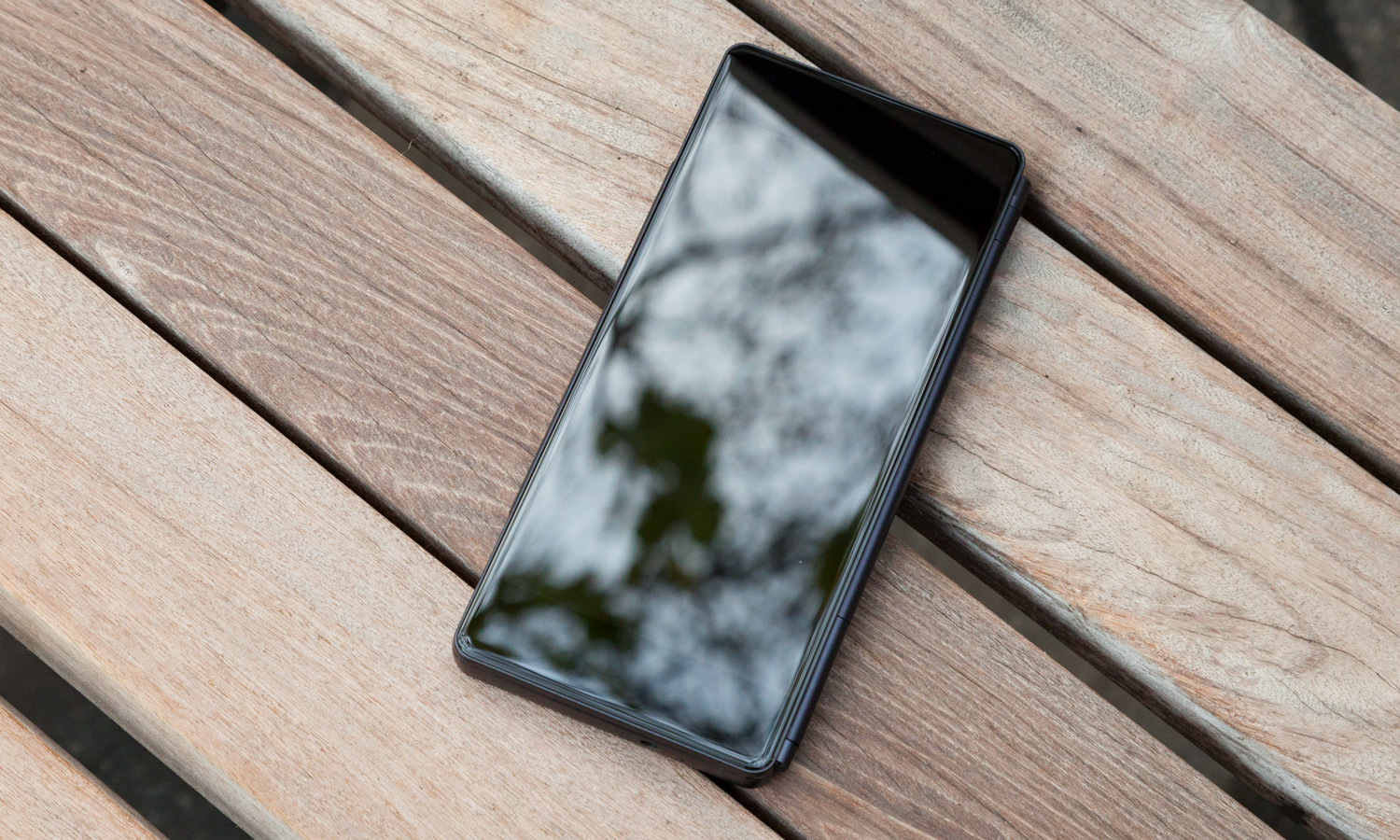
For the most part, the Axon M is as well-designed as you'd hope a dual-screen smartphone could be, save for one serious flaw. Despite all of this phone's scratch-resistant glass, when we set our Axon M down on a stone ledge, it immediately came away with nasty scuffs on three corners. Given that cases for this phone will probably be rare (aside from a plastic offering from ZTE that leaves the hinge exposed), this looks to be an unavoidable casualty of the screen-facing design ZTE opted for. It's simply something owners will have to live with.
Software: Two screens are more awkward than one
ZTE, fortunately, has made it very easy to break out that second screen: Simply flip open the device and press the "M" key stationed in the navigation bar.
From there, you're offered three modes: Dual Mode, which presents different apps on each display; Extended Mode, which combines both displays to show one app; and Mirror Mode, which produces an identical image on both screens. That latter mode can be helpful for letting other people in a room see the same things that you see.
But it’s Dual Mode that’s unquestionably the most useful implementation. Having access to Google Maps and Yelp side by side makes finding a lunch spot much easier. Ditto for answering texts when you don't want to put the brakes on a YouTube video you're already watching. Both screens remain simultaneously responsive, and ZTE has also included a few gestures, like a three-finger swipe across the center, to move apps from one panel to the other.
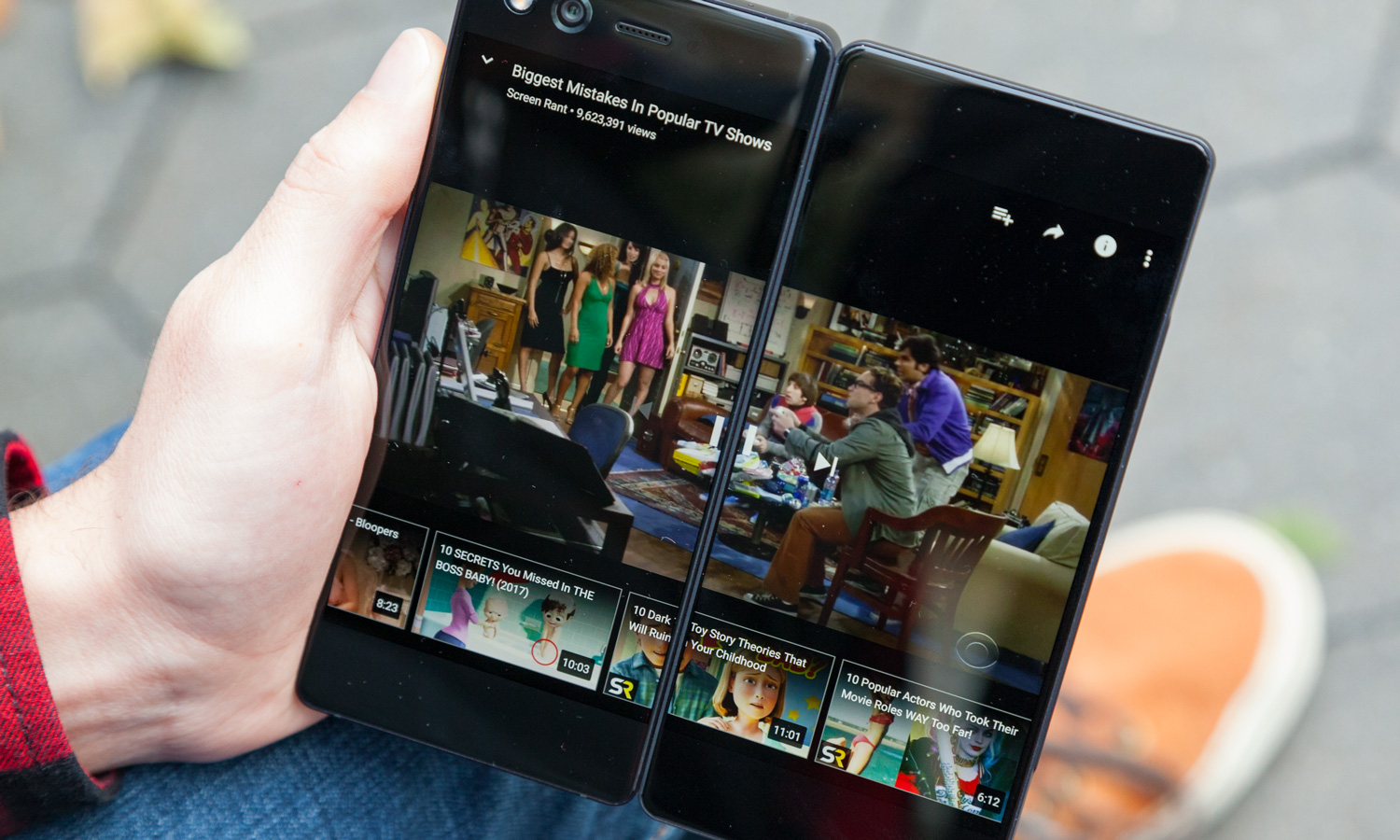
Extended Mode, however, presents problems. The hinge is simply too much of a nuisance. Most apps tend to work better when the phone is held horizontally, like a Nintendo DS, so that the hinge doesn't impede left-to-right reading. But many apps aren't optimized to be used this way, and even the ones that are — like Facebook — don't use the extra real estate to any clear advantage. Despite the more tablet-like form factor of this phone, you're pretty much left with widened phone apps, which don't particularly look or feel better to navigate. And good luck if you have to tap a hard-to-reach button that's between the two screens, partially obscured by the gap..
But the one thing you certainly never want to do is use Extended Mode for viewing media. The aspect ratio of both displays combined is close to a square, which means 16:9 content gets heavily letterboxed, to the point that the size is just marginally larger than if you were watching that same video on a single screen. These kind of experiences make you wonder why ZTE and AT&T are pushing entertainment so hard on this device, when the Axon M performs much better as a tool for productivity-minded power users.
Speaking of entertainment, AT&T has loaded the Axon M with a glut of bloatware, from the DirecTV Now app (which cannot be disabled, mind you) to a trio of games, Yelp, Facebook, Uber and a suite of 10 carrier apps. Also, you can add ZTE's latest to the list of new smartphones with Android 8.0 Oreo promised at a later date, as the phone comes equipped with 7.1.2 Nougat out of the box. It's not heavily skinned, but there's no ignoring the "AT&T" carrier identifier that persists in the notification bar, no matter how little space there is up there when you're using only one screen.
Overall, the dual-display features are easy enough to operate and understand, but use cases that truly legitimize them are few and far between. To make the outlook even murkier, the Axon M simply doesn't handle switching modes well. There's often a 2-second delay any time you enter Dual Mode, and if you shut the second display while the phone is using it, you can end up in some pretty strange situations. At one point, I had Facebook and Google Maps fighting for space on the main display before the phone sorted itself out.
Displays: Average LCD screens
For a phone with two screens, the Axon M left me with little to say about its pair of 5.2-inch 1080p LCD panels. They're remarkably average, with underwhelming brightness and colors that don't really pop, although the small screen size means that the full-HD resolution is sufficient for a sharp picture.
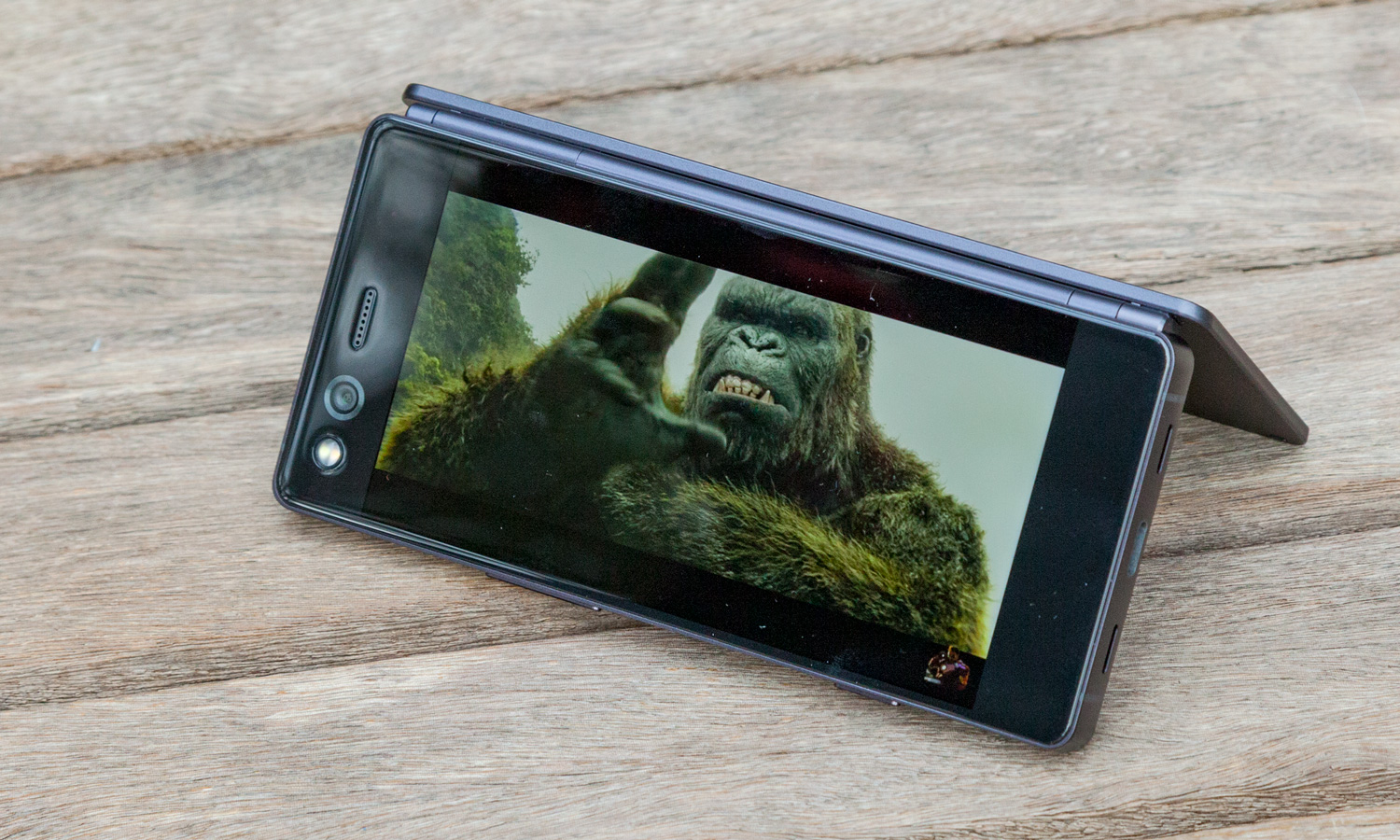
The Axon M re-created 100.2 percent of the sRGB gamut in our testing and notched a Delta-E color-accuracy score of 0.22. (Numbers closer to 0 are better in that latter test.) Those scores mean images are quite realistic, though if you prefer more-vibrant hues, the Axon M doesn't offer alternate viewing modes. It's a strange omission on a handset intended for watching television and movies.
The Axon M's peak full-screen brightness faltered, registering just 394 nits on our light meter. That's well below the 433-nit average for smartphones, and more typical of an OLED screen than a conventional LCD panel.
Performance: So last year
Strangely, with its Snapdragon 821 processor, the Axon M is powered by the same silicon as 2016's Pixel and the LG G6 released earlier this year. This puts ZTE's device a year behind the current crop of frontline Android flagships, which are powered by the Snapdragon 835. Unfortunately, you can feel the gap in processing power as you put the Axon M through its paces.

The Axon M performs adequately when only one screen is used, but fold the device out, and there's always the potential for some slowdown. Apps can occasionally hang and cease responding to taps for brief moments, or refuse to open for several seconds. The 4GB of RAM helps keep recent apps in memory, so they're right where you left them when you switch to Dual Mode, for example. But overall, the Axon M never feels quite as swift as other phones in its price range.
In Geekbench 4, which tests overall performance, the Axon M managed a multicore score of 4,354. That's a bit higher than the first-generation Pixel's 4,176, but handily behind the Pixel 2's 6,282. The Axon M is actually about on par with the just-released Moto X4 Android One, a midrange handset running Qualcomm's Snapdragon 630 processor, which achieved 4,122.
Graphics performance was similarly serviceable, as 3DMark's Ice Storm Unlimited benchmark produced a score of 30,059. For reference, the Galaxy S8 achieved 36,508. Gamers, be advised that not all titles will work across the Axon M's display modes. For example, Injustice 2 played well on one screen, but attempting to run the title in the Expanded or Dual configurations stopped the game dead in its tracks, forcing the app to close. Meanwhile, Big Farm, a much less demanding title that comes preinstalled on the phone, ran perfectly in all cases.
Camera: Selfie specialist
The Axon M's 20-megapixel, f/1.8 camera sits above the main display, facing the user, and is the only camera you'll find anywhere on the device. When you want to take a picture of something in front of you, ZTE's camera app instructs you to turn the phone around and use the secondary screen.
You'll have to build muscle memory for flipping the phone every time you want to swap perspectives. I can't tell you how many times I pressed the button that would be reserved for switching to the back camera on any other smartphone, only to find myself staring at a blank screen for 5 seconds before realizing I needed to spin the whole thing around.
You'd think, then, that with only one camera, ZTE could concentrate on making this shooter the absolute best. And yet, the Axon M's camera lacks optical image stabilization, a key ingredient in any true flagship camera. Considering that the phone is the exact same price as a Galaxy S8, we were keen to compare the two, but the Samsung device demonstrated its superiority very quickly.
Both phones' HDR modes were utilized for this scene of the Abraham Lincoln statue in Union Square in New York, and the first thing you notice is how washed out and overblown the Axon M's rendition is. Ideally, HDR should curb this, by combining the shadows and highlights from different exposures to generate a more balanced image. But the tops of the buildings in the background are absolutely scorched by the sun here, and the steep gradient of the sky is unnatural. Combined with the cooler tint, those results make this picture look like it came from a phone that costs hundreds less.
The outlook somewhat improved for this photo of pumpkins from one of the park vendors. The Axon M's higher megapixel count helps it achieve a sharper overall image, though we prefer the shallower depth of field offered by the Galaxy S8. Again, the ZTE demonstrates a blue cast that doesn't do this late afternoon scene justice.
The Axon M's selfie situation is interesting. Because this phone uses the same camera for all scenarios, you can take portraits of yourself that look considerably sharper than what you're likely to get from any other phone. The Galaxy S8's front-facing shooter simply can't match the clarity of the Axon M's shot, and I also prefer the subtle blur in the background that ZTE provides. The dual-screened phone may not be particularly gifted in the camera category, but its selfie game puts other phones to shame.
Battery: Quick to drain, slow to charge
Powering the Axon M is a 3,180-mAh battery burdened with the unenviable task of lighting two screens. But even with just one display active, ZTE's flagship can't match the endurance of other flagships.
In our battery test, which consisted of continuous web surfing on AT&T's LTE network, the Axon M lasted just 8 hours and 58 minutes. That's with only one display active, mind you, and the result pales in comparison to the Galaxy S8's time of 10:39. And that phone has a smaller, 3,000-mAh battery. Using the Axon M's second display accelerates depletion, as you would expect, and we are currently conducting another test in Dual Mode to quantify the effect.
In terms of charging speed, the Axon M does support Qualcomm's Quick Charge 3.0 protocol in its stock adapter, though this mode didn't seem to make a significant difference when we plugged the phone in at 0 percent. In 30 minutes of being connected to an outlet, the Axon M reached only 19 percent, which doesn't indicate any fast charging at all. Quick Charge 3.0 isn't Qualcomm's latest iteration of the technology, but considering some devices can use it to reach 60 percent in the same time, the Axon M should top up faster than this.
Bottom Line
I may have had my reservations about the Axon M, but it was a device I wanted to love. ZTE is taking a big gamble, designing a phone that other companies have been too hesitant to take on. Unfortunately, the device ends up being a gimmick that struggles to prove its worth outside of a few rare scenarios here and there.
Using the Axon M is simply too frustrating an experience, too much of the time. The last-gen processor simply isn't up to the task, and until flexible displays hit the market, that hinge is going to serve as one ugly deal-breaker. The software does a serviceable job of keeping most of the popular apps humming along, but some don't handle being shuffled from screen to screen well, and they will slow everything down to a crawl.
It will take a whole new approach to design and a thoughtful, extensive reimagining of how Android fundamentally operates to make a dual-screen or foldable smartphone work. That goes for not only for ZTE, but also any phone maker that follows in its footsteps. Sadly, the Axon M isn't that device; for all of its entertainment aspirations, it's a pilot episode that's not quite ready for prime time.
Credit: Tom's Guide
Adam Ismail is a staff writer at Jalopnik and previously worked on Tom's Guide covering smartphones, car tech and gaming. His love for all things mobile began with the original Motorola Droid; since then he’s owned a variety of Android and iOS-powered handsets, refusing to stay loyal to one platform. His work has also appeared on Digital Trends and GTPlanet. When he’s not fiddling with the latest devices, he’s at an indie pop show, recording a podcast or playing Sega Dreamcast.
-
billbrasskey I am sensing some bias here. I own this phone And I have owned every galaxy since the captivate. I have had zero performance issues even with dual screens open. It operates like a rooted android. No BS Samsung bloatware you never use and can't delete. Battery life hasn't been an issue AT ALL! I am a heavy user and yes I charge every night but who doesn't? You're splitting hairs between 9 hours and 10.5 hours. Slow charging? I charged yesterday from 17% to full in less than an hour. This phone gets a 5 /10 but the S8 gets a 9/10? Ok fanboy.Reply
